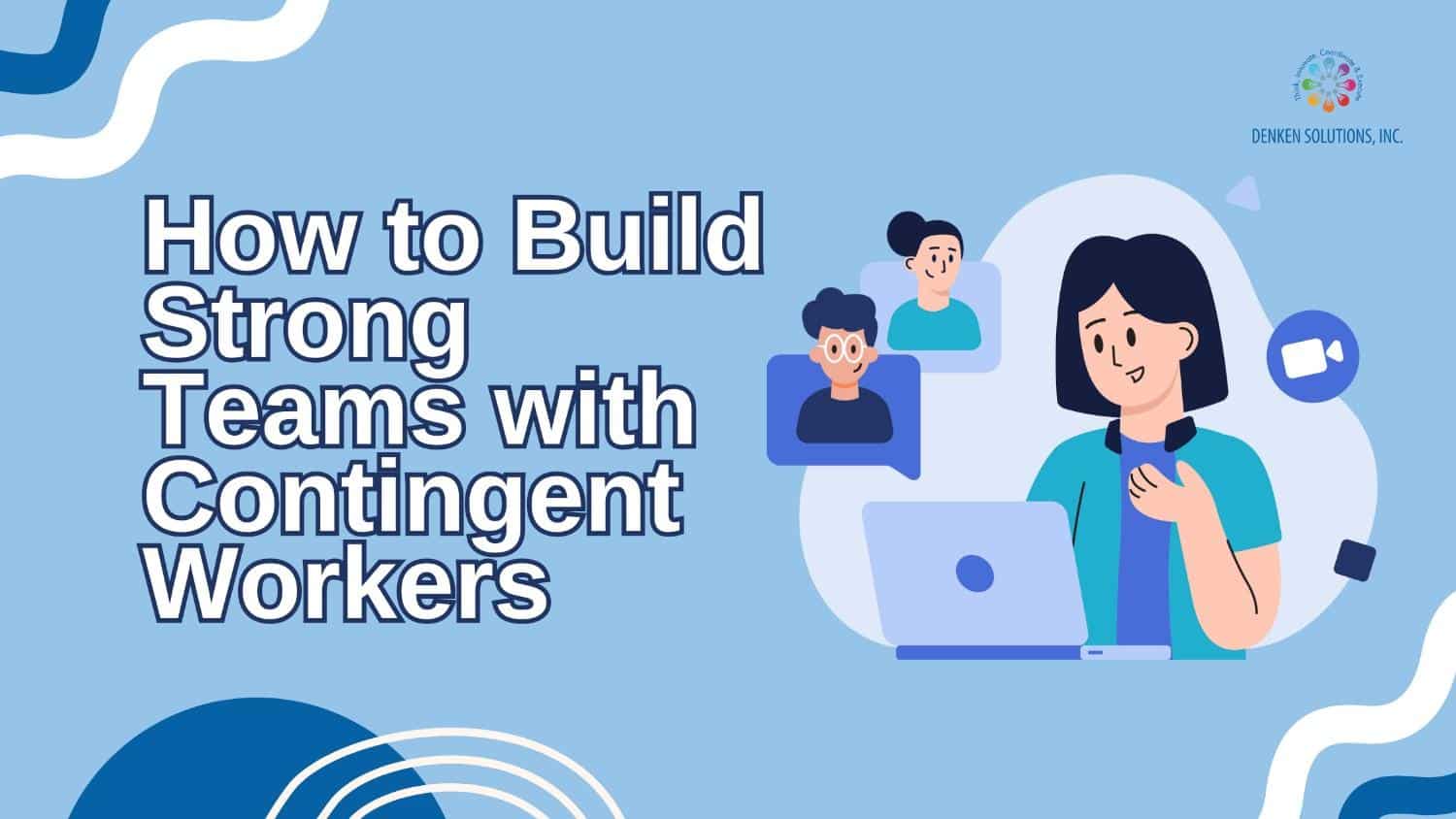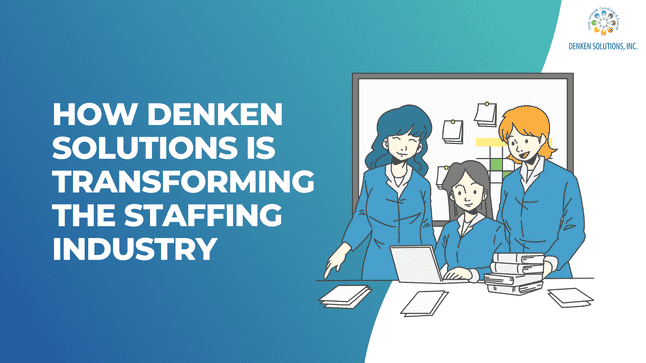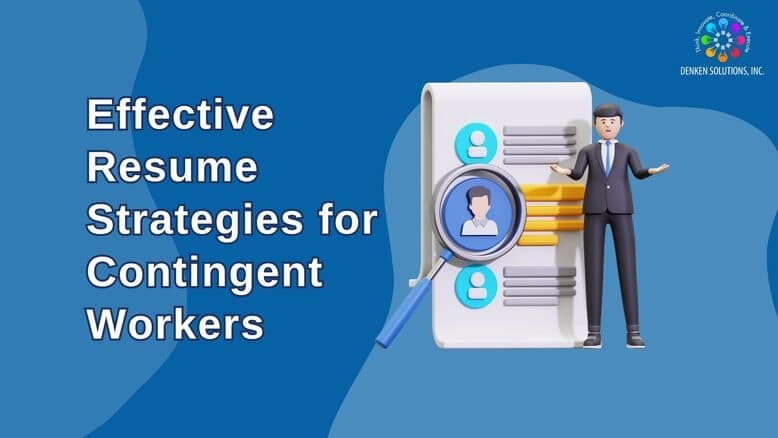As businesses are continuing to embrace cost-effectiveness and flexibility, the contingent workforce, which also includes contractors, temporary employees, and freelancers, is growing rapidly. While this shift is providing access to special scalability and skills, it is also presenting a unique challenge, which is building and maintaining a strong and collaborative team. Since a sizable section of the workforce is employed in contract or temporary positions, it is crucial to guarantee smooth coordination, integration, and alignment between full-time and temporary employees for long-term success. In this blog, we have explored effective strategies for team building with contingent staffing, especially when a huge portion of the workforce comprises contract-based employees, thus allowing you to leverage the best of both worlds.
Understanding the role of contingent workers in your workforce
Contingent workers include temporary staff, freelancers, contractors, and part-time employees. They play a vital role in the success of a modern business. Their workers will offer flexibility, specialized skills, and affordable costing options, thus making them a valuable asset to any organization. As companies are looking to scale quickly or need expertise for certain projects, they will provide a way to adapt without the long-term commitments associated with full-time employees.
1. The advantage of flexibility:
Temporary workers will give companies the ability to adapt quickly to the changing demands of the business. Whether it is to achieve a short-term project deadline, cover the need for increased workload, or provide expertise for a certain task, contract workers can be a valuable resource. They will allow businesses to scale down or up based on the demand without worrying about the burden of hiring permanent staff or committing to a long-term contract.
2. Specialized skills:
One of the primary reasons businesses hire a gig worker is their special skills. These workers tend to have vast expertise in areas like graphic design, engineering, marketing, and data science, and could bring a high level of knowledge to specific projects. Companies will gain an advantage from this access to niche expertise, eliminating the need to invest in long-term employee development or training.
3. Cost-effective options:
Temporary or contract-based workers are usually more cost-effective than full-time employees. They are hired for a certain period or on a project basis, which means that companies could save on benefits, training, overhead costs, and salary expenses. For multiple businesses, especially startups or those in seasonal industries, this financial flexibility is important for maintaining profits while also having access to the top talent.
4. Encourages strategic initiatives:
Contingent workers will contribute towards strategic initiatives that require certain knowledge or additional manpower. For instance, when a company is planning to launch a new product, expand into a new market, or implement a huge technological update, gig workers can easily offer support without permanently increasing the size of the team. They assist in driving success without overburdening the current team.
5. Agile workforce:
In this increasingly competitive environment, businesses are required to stay agile to be able to pivot quickly to address market changes, new technologies, or customer demands. Gig workers will provide the agility that full-time teams usually cannot, as they can be quickly brought on board to address immediate needs and just as easily let go once the task is done.
6. Long-term value potential:
Although they are usually employed for temporary tasks, gig laborers might also be beneficial in the long run. If the business connection is successful, some temporary workers may move into full-time positions, giving businesses the opportunity to assess a candidate’s abilities and cultural fit prior to making a permanent offer. A talented temporary workforce can also act as a talent pipeline, providing the possibility of future full-time hires.
7. Contribution to the promotion of innovation:
Innovation can be stimulated by the new ideas and perspectives that temporary workers frequently bring. They may offer your company insights into emerging trends and best practices from their work with numerous firms in a variety of industries. This outside perspective can support your company’s ongoing innovation and help it remain ahead of developments in the industry.
Top 8 challenges of building a cohesive team with contingent workers
As temporary workers have become a huge part of the workforce, organizations have started facing unique challenges in maintaining a high-performing and cohesive team. It can be challenging to integrate these people into a long-term, permanent workforce, even though they provide flexibility, cost-effectiveness, and specialized expertise. The following are the main obstacles that companies face when attempting to assemble a cohesive team from a combination of full-time and contract employees, ultimately affecting the workforce synergy:
1. No long-term commitment:
One of the primary challenges of working with gig workers could be the lack of long-term commitment. Since these workers are usually hired for certain projects or temporarily, they might not have the same emotional investment in the company as the long-term and full-time employees. The lack of commitment could lead to reduced engagement levels, which could affect the quality of work and overall teamwork. It could also create an imbalance in the dynamics of the team, with full-time employees potentially feeling more invested than their temporary counterparts.
2. Lack of communication:
Building a cohesive team requires effective communication, which can be more difficult when gig workers are involved. These employees frequently work from home or have different schedules, which can lead to miscommunication, a lack of real-time teamwork, and delayed responses. Furthermore, excluding temporary workers from specific internal meetings or social events could cause communication to break down and create a rift between them and permanent employees.
3. Integrating with the company’s culture:
Integrating temporary workers with the company’s culture is tougher than it usually seems. Full-time employees usually have the opportunity to be involved in the company’s values, mission, and culture over time. Moreover, a flexible workforce might not have the same opportunities to form relationships or even feel like a part of the organizational environment. Without the intentional efforts to include this talent, contract-based workers could feel disconnected, thus resulting in lower morale and a sense of isolation.
4. Team dynamics:
Establishing trust is essential to any cohesive team, but it can be more difficult when some team members are dependent. Building trust with these employees may take longer because they are not permanent team members, and they might not be viewed as completely integrated team members. Feelings of exclusion, misalignment, or tension may result from this, which may also have an impact on the dynamics of the team as a whole and how they are viewed by full-time staff.
5. Different expectations and work styles:
Temporary workers tend to bring diverse expectations and work styles to the company, especially if they come from multiple industries or backgrounds. These differences could lead to misaligned expectations regarding the quality of work, project timelines, and communication norms. Full-time employees are accustomed to a set of processes or pace that could conflict with the flexible and dynamic methods followed by short-term hires. Navigating these differences requires thorough contingent workforce management to ensure collaboration and harmony.
6. Restricted opportunities for professional growth:
Compared to full-time employees, gig workers might not necessarily have the same access to opportunities for professional growth. While they might not be able to participate in company training, workshops, or mentoring programs, full-time employees are frequently included. Consequently, they can lose out on chances for skill development that would make them feel more a part of the team and in line with the goals of the company. Their capacity to deliver their best work and make enduring bonds with other team members may be hampered by this lack of access to professional development.
7. Uncertainty regarding benefits and job security:
Generally speaking, temporary workers do not enjoy the same benefits or job security as full-time workers, which can lead to feelings of insecurity or alienation. Their degree of engagement may be impacted by the understanding that they might not be there for the long run, since they might not see the value in contributing to long-term projects or completely integrating into the team. Full-time staff, on the other hand, might be more committed to the long-term prosperity of the business, which could cause a motivation gap between temporary and permanent staff.
8. Accountability and performance:
With temporary workers, it may be more challenging to maintain consistent performance and responsibility, particularly if they are working remotely or on a flexible schedule. It might be difficult to monitor development, maintain quality control, and keep people accountable without regular supervision. Furthermore, because contract-based work is temporary, there may be lapses in performance continuity when employees go or are replaced, which could have an impact on the performance of the entire team.
How to integrate contingent workers into the team?
Successfully integrating gig workers into the organization is important for maintaining a high-performance team. While they will bring flexibility and specialized skills to the company, it is crucial to ensure that they effectively integrate into the team’s culture, workflows, and adapt to the communication channels. Below are the key collaboration strategies for ensuring a seamless integration:
-
Structured process for onboarding:
A well-defined onboarding process is important for temporary workers to effectively get up to speed with the culture, expectations, and processes of the company. This will help them feel welcomed and prepare them mentally from the beginning, thus ensuring that they are not left out of vital team activities.
- Providing an overview of the mission, values, and goals of the company: This will help contract-based workers understand the bigger picture and how the role fits in the organization
- Introduce the team members and vital keyholders: Make sure you introduce the gig employees to full-time employees, the project managers, and other relevant personnel to encourage team-bonding.
- Provide the necessary resources and tools: Ensure that they have access to the communication tools, software, and platforms that the team uses, such as Trello, Asana, or Slack.
- At Denken Solutions, we ensure that the contingent workers are onboarded seamlessly and also promote greater integration and sustained cooperation by giving the temporary workers a sense of belonging from the very beginning.
2. Clear means of communication:
Effective communication is important when integrating contract-based workers, especially if they are working part-time or remotely. Setting clear communication channels and expectations will ensure that everyone stays aligned and that projects will progress smoothly.
- Using collaborative tools: Platforms such as Microsoft Teams, Zoom, or Slack will make it easy for remote workers and other employees to stay connected.
- Work on regular check-ins: Schedule a weekly or bi-weekly check-in to discuss the progress, address the concerns, or provide feedback.
- Maintain transparency: Inform every employee of important choices, deadlines, and expectations. They will feel more appreciated and a part of the team as a result.
- At Denken Solutions, we ensure seamless communication between the project-based staff and the company through various communication tools.
3. Include the contingent workers in the team activities:
One of the primary challenges that contract-based workers will face is feeling separated from the main team. To foster a sense of being, involve them in the group activities, and ensure they are a part of the broader work culture.
- Involve them in the team meetings: Even if the talent is not present full-time, include the temporary workers in relevant meetings to keep them updated on the progress and vital decisions.
- Encourage social interactions: Stronger linkages between temporary and permanent staff can be achieved through lunch-and-learns, happy hours, and team-building exercises that can be conducted virtually or in person.
- Invite them to business-wide events: Even if they are only working with you temporarily, make sure to invite gig workers to any yearly meetings, social gatherings, or brainstorming sessions your firm hosts.
4. Learning opportunities and professional development:
Contingent workers usually miss out on career development and training, which full-time employees often receive. By offering these opportunities, you can improve their skills while also making them feel more valued and engaged.
- Provide access to the training resources: Enable access to contract-based workers to online courses, certifications, or workshops, which will enhance their knowledge and skills.
- Encourage mentorship: Pair the flexible or remote workers with mentors from the company who can provide guidance and support for professional growth. This will also encourage retaining contingent workers for long-term growth.
- Including them in the knowledge sharing meetings: Invite the gig workers to participate in training sessions, internal knowledge events, and webinars to ensure that they continue learning.
5. Lay out clear goals and expectations:
Clear goals and expectations are important for every team member; however, they are even more important when there are contract-based workers in the team. Providing performance metrics and well-defined roles will ensure that they know what is expected of them and how the work they do will contribute to the organization’s objectives.
- Discuss the project deadlines and timelines: Ensure that the gig workers understand the requirements of the scope and key deadlines.
- Establish measurable goals: Set certain, achievable, relevant, measurable, and time-bound goals for the temporary workers to assist them in staying on track.
- Provide consistent feedback: Offer constructive feedback to contract-based workers during check-ins. Also, celebrate progress and address any areas for improvement.
Conclusion
Building a strong and well-bonded team when a huge portion of the workforce is temporary tends to present unique challenges, but could also provide significant opportunities. Businesses may guarantee that both full-time and contract-based workers collaborate effectively by putting methods like inclusive team-building exercises, mentorship programs, clear communication, and efficient onboarding into practice. To encourage long-term involvement and excellent performance, it is crucial to incorporate contract-based workers into the company’s culture, set clear expectations, and provide opportunities for professional development.
Organizations may maintain a cohesive, cooperative team while utilizing the flexibility and specific abilities of their gig workers with the correct strategy. We at Denken Solutions are committed to assisting companies in overcoming these obstacles, making sure that temporary workers are not only included in your workforce but also given the tools they need to make a significant contribution to the success of your business.



